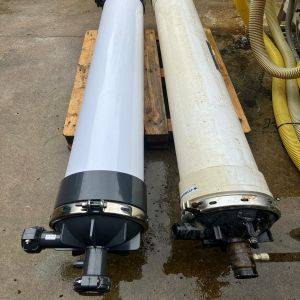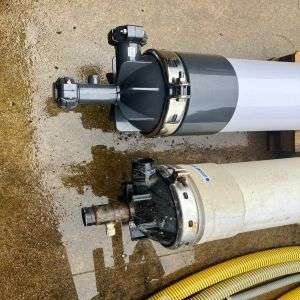How Ultrafiltration Technology Enhances Water Quality and Reduces Operating Costs
August 09, 2024
In today's water treatment field, ultrafiltration (UF) technology is gaining popularity due to its efficiency, cost-effectiveness, and versatility. Ultrafiltration technology, through its unique filtration principles, not only significantly improves water quality but also effectively reduces operational costs. Let's delve into the working principles of ultrafiltration technology and its advantages in water treatment.


What is Ultrafiltration Technology?
Basic Principle: Ultrafiltration membrane is a filtration technology that utilizes a semipermeable membrane to physically separate substances. The pore size of ultrafiltration membranes typically ranges from 0.01 to 0.1 microns, effectively removing suspended particles, bacteria, and viruses, while allowing water and dissolved salts to pass through.
Advantages of Improving Water Quality
-
Efficient Removal of Pollutants:
- Ultrafiltration membranes can effectively remove most suspended solids, bacteria, and viruses, thereby improving water quality. This results in clean water suitable for various applications such as drinking water, industrial purified water, and other high-quality water demands.
-
Retention of Beneficial Minerals:
- Unlike reverse osmosis, ultrafiltration technology does not remove beneficial minerals from water. This ensures that essential nutrients remain in the water, which is crucial, especially for drinking water applications.
-
Enhanced System Reliability:
- Ultrafiltration systems are highly effective in removing microorganisms and suspended solids, reducing the load on downstream equipment. This enhances the overall reliability and efficiency of the entire water treatment system.
Advantages of Reducing Operating Costs
-
Reduced Chemical Usage:
- Due to the effective removal of suspended solids and pathogens, ultrafiltration membranes often require fewer or no chemicals for treatment. This reduces chemical procurement and handling costs, as well as minimizes environmental impact.
-
Lower Energy Consumption:
- Ultrafiltration systems typically operate at lower pressures compared to other high-pressure filtration systems like reverse osmosis. This directly reduces daily operational energy costs.
-
Lower Maintenance Costs:
- Ultrafiltration membranes have longer cleaning and replacement cycles, making maintenance relatively straightforward. This reduces downtime and maintenance expenses, further lowering operational costs.
-
Extended Equipment Lifespan:
- Effective pretreatment by ultrafiltration technology protects subsequent treatment equipment, prolonging the overall lifespan of the water treatment system. This reduces equipment replacement frequency and related costs.
Application Examples
-
Municipal Drinking Water Treatment:
- Ultrafiltration technology is widely used in municipal drinking water treatment to remove bacteria and suspended solids, ensuring safe water supply for residents. It preserves minerals in water, enhancing water taste and quality.
-
Industrial Wastewater Treatment:
- Ultrafiltration technology excels in industrial wastewater treatment, particularly in pretreatment stages, effectively removing suspended solids and oils. This protects downstream treatment equipment and reduces overall treatment costs.
-
Seawater Desalination Pretreatment:
- In seawater desalination processes, ultrafiltration serves as a crucial pretreatment step by removing most suspended particles and microorganisms. This reduces the burden on reverse osmosis systems, prolongs membrane lifespan, and lowers overall operational costs.
Through ultrafiltration technology, not only can water quality be significantly enhanced but operational costs can also be effectively reduced. Whether it's municipal drinking water treatment, industrial wastewater treatment, or seawater desalination, ultrafiltration technology demonstrates unique advantages and promising applications. If you have further interest or inquiries about ultrafiltration technology, please feel free to contact us.





 Language
Language





 Network Supported
Network Supported